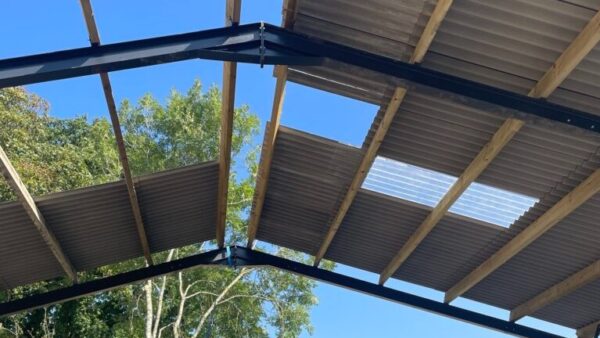
The London Fire Brigade (LFB) has warned there will be an increase in serious building fires unless the construction industry “starts to take fire safety more seriously”.
The LFB said that “responsibility for ensuring buildings are constructed with proper fire safety measures sits with the construction industry and yet a general lack of competence means that dangerous decisions are being made about buildings’ design or construction”.
Changes to fire safety regulations called for by London Fire Brigade:
- A loophole to be closed which means technical fire safety elements can be designed without the involvement of a competent fire safety professional – for example escape routes.
- Formal qualifications or accreditation for those who install life-saving systems such as smoke ventilation and fire detection and alarms.
- Clearer definition of who is responsible for what under fire safety legislation.
- A clampdown on companies which act as a building control body as well as offering fire engineering design advice without clear separation between the two roles.
- A robust independent onsite inspection programme that ensures the fire safety elements of a building’s design are translated into the finished construction.
The organisation said that its fire safety experts often “face serious flaws” when they inspect buildings, including:
Significant construction defects – such as flawed compartmentation between flats which can allow fire and smoke to spread throughout buildings.
Critical fire safety systems, such as mechanical smoke ventilation, that either were not installed as per the original design, were poorly designed, or were not functional.
People in control of buildings not understanding or even knowing what fire safety measures are in place, let alone how best to maintain them.
The LFB made its submission to Dame Judith Hackitt’s Independent Review of Building Regulations and Fire Safety, commissioned following June’s Grenfell fire, last month.
Assistant commissioner for fire safety Dan Daly said: “It took a tragedy for everyone to take fire safety seriously and listen to what the Brigade has been saying for years about skills. Urgent action is needed to better regulate those who are responsible for ensuring a building’s design, construction and maintenance are fit for purpose.
“There are countless points where a dangerous decision can be made about a building’s design or upkeep and hardly any measures to ensure that the people making those decisions are sufficiently experienced and properly qualified.
“This means that potentially dangerous design flaws could exist within a building until we either find it at a later date, or in the worst case scenario, it is exposed by a serious fire.
“We don’t have the legal powers or the resources to check the entire fabric of a building but we often uncover dangerous flaws that we can’t ignore.”
Comments
Comments are closed.











The brigades should never have ceased inspection and advice at design stage and should not have handed these responsibilities over to Building Control and the building designer. There appears to be adequate resource to inspect the buildings once erected and to uncover ‘faults’. Why not put that resource, or some of that resource in at design stage
Interesting, there are flaws in the construction process and not always in construction itself. I agree that people who have the last word on building projects and designs quite often have little or no constructon knowledge, especially on public sector and large commercial projects.
I would also suggest client project managers need to help the client understand more about construction so decisions can be made with all relevant information being considered before some decisions are made.
Whilst I support the LFB they must extend their concerns to existing buildings and particularly to old purpose built and converted flats. 90% of those I see as a Fire Risk Assessor do not comply with the Regulations and 80% have no fire detection system or adequate fire precautions. There needs to be a central Register where all Fire Risk Assessments can be lodged.
As in USA – licenced professionals only should be let near F&LS
And a SINGLE POINT AUTHORITY for ALL the Building Elements that work together Active & Passive have been fully assessed and verified as fit for the basic purpose of achieving safe evacuation and safe conditions for first responders to manage the incident in as safe as possible manner.
Divide up the responsibilities and NOBODY takes responsibility. Management Contractors simply do not take it seriously anymore there never a Single Point appointment from concept to hand over – always some one else’s responsibility (I’m doing my bit) head in the sand mentality.
If you want scary, I’m working on a project (not in the UK) where the EU consultants are more than happy to issue statements that compliance with British Standards is not, in their opinion, necessary.
That it includes things like the design of fire fighting lift installations, is frightening.
We had one consultant who, on the day before Grenfell occurred, and in response to my expressing concerns about insulation and potential for toxic byproducts of a fire, sent me a lecture about how a fire in their opinion was unlikely to occur.
I really don’t know what to do about it given the UK architect who employed them has never had a grip on the job and isn’t interested either (CDM, whats CDM?) and the site architect who is the only other person with design skills at site level just wants problems like that to go away, as he won’t challenge his own countrymen unless he absolutely is forced to.
The client is meanwhile clueless as it has been concealed from them all the way…but then what exactly are you going to say to accountants who have it in for you anyway?
I’ve never worked on a project this bad in my life.
It’s interesting LFB forget they, as all fire authorities are, formally consulted by building control bodies on all commercial and residential buildings with a common staircase undergoing alterations works.
They have up to 14 working days to respond back to the building control body and often some fire authorities don’t respond.
The functional nature of the Approved Documents means there are more than one way of satisfying the Building Regulations.
There is definitely a skills knowledge shortage in the principles of fire safety within all sectors, not just the construction industry.
While the LFB’s comments may be valid, part of the problem is that social housing providers are unable to attract the brightest and best of the construction industry. The difficulty is that the maintenance activities of social housing providers do not, in overall terms, cover sufficient of the spectrum of the construction industry for a person to consider it a career move. In other words, once you are in maintenance of social housing, there is rarely a way back into the mainstream construction industry.
To my mind, this is an aspect that both Dame Judith Hackett’s inquiry, and the CIOB taskforce, should address.
I have spent almost all of my professional career in Building Control (now retired) working for both Local Authorities as well as Approved Inspectors, over time I attended many seminars and courses, over and above the minimum CPD requirements.
One of the most memorable included a residential Fire Safety theory assesssments, and practice fire scenarios at the Fire training college in Morton-in-Marsh. It was invaluable, should be mandatory requirement for all BCOs before qualification. I made sure that a Fire Officer was always present whenever I made a final/completion inspection on a building that was subject to the FPA or when we thought it wise to consult. Making sure we had live tests on all Fire alarms audible/visual, Detectors, EMRs Evac chairs and provision for disabled escape. Access for Fire engines etc.I could list many many more. Suffice to say a mandatory requirement for the FPO. To also carry out a Final Inspection as well, preferably alongside the BCO.
Joe Quigley 15 November 2017.
The current dot and dab drylining systems in new housing are not being properly sealed with adhesive, leaving air to circulate freely behind the plasterboard between floors and the loft space. In the event of a fire, it cannot be isolated leaving the residents at great risk. The builders themselves are not interested in addressing this problem, nor are the warranty providers.
IT IS A NATIONAL SCANDAL, not only due to the fire risk, but also because the EPC ratings the builders claim are totally fictitious.
Whilst I look forward to Fire Regulations being tightened up and rigorously regulated for tower blocks, the safety (and comfort) of the occupants of low rise houses should not be overlooked.
The recommendations requested by the LFB should be fully implemented without delay.
The challenge the construction industry is facing is a lack of training of the workforce/subcontractors and the lack of trained site management staff especially on socal and new built homes.
My dissertation in 1993 highlighted the differences between the Loss Prevention council’s fire code (along with the many other codes) and the lower standard of fire protection required by the building regulations. It is hard to believe that even though the building regulations have been updated since then we still had this horrific event.
My experience in the management of construction of medium and high rise buildings is that the fire safety design is well mananged by the consultant design team, and the execution of the fire strategy rigorously enfirced by the main contractor. Building control in the London Boroughs with whom I worked (LB Hackney, City of London, LB Camden) were all deeply involved and committed both at the design and the execution stages. I believe as a team we built safe designs to high standards of protection. All passive measures were one hundred percent inspected by us and to a large extent BC (and in the case of fire stopping, each installation labelled and referenced as well), and all active measures such as smoke extraction, sprinklers, door closers, lift functions, etc. were comprehensively tested and demonstrated to BC. The designs were fully compliant with the LFB’s requirements, as checked by BC.
It is the contractor’s responsibility to ensure this, but BC has a responsibility to ensure the contractor is compliant.
The only time I did not feel there was adequate oversight of my team was when using certain approved BC inspectors. Their design input/checking, and inspection, ranged from adequate, to cursory and absentee. This made my job harder. I would firmly recommend LABC to all contractors who want to deliver a safe project in London. I suggest the LFB direct their ire at the contractors who are happy to cut corners and get away with whatever they can with lip service provided by approved inspectors, or perhaps underfunded and stretched LABC providers.